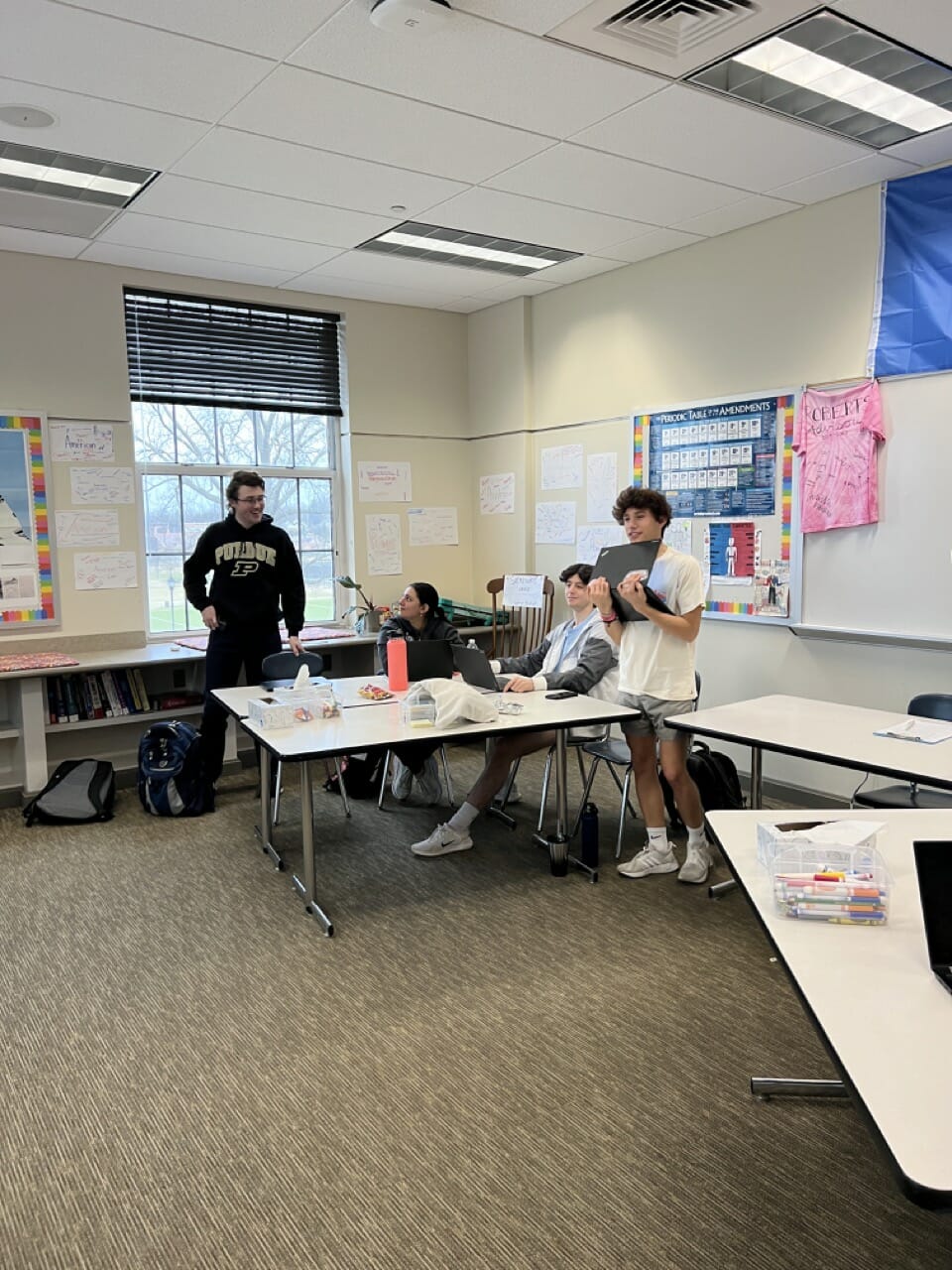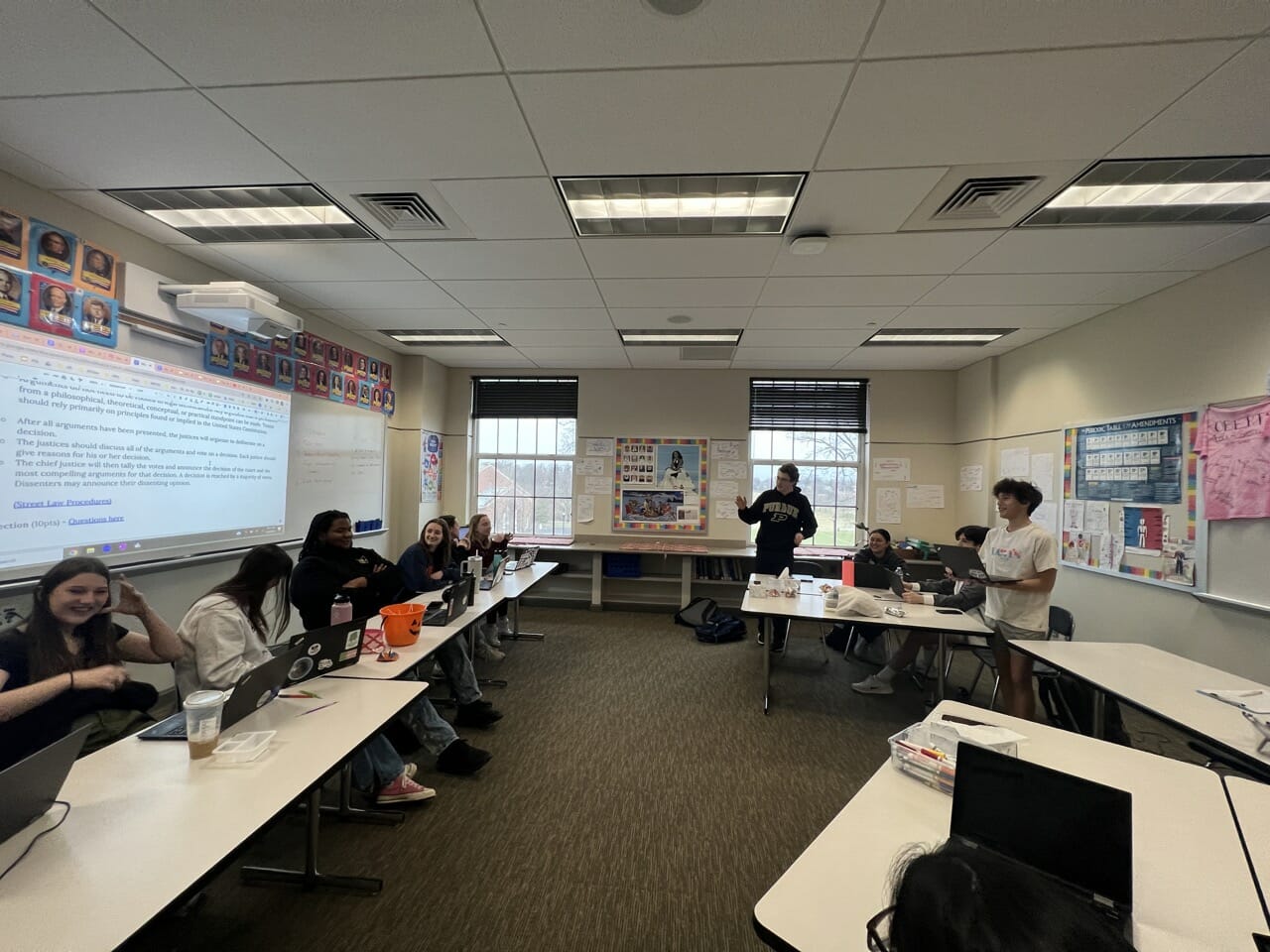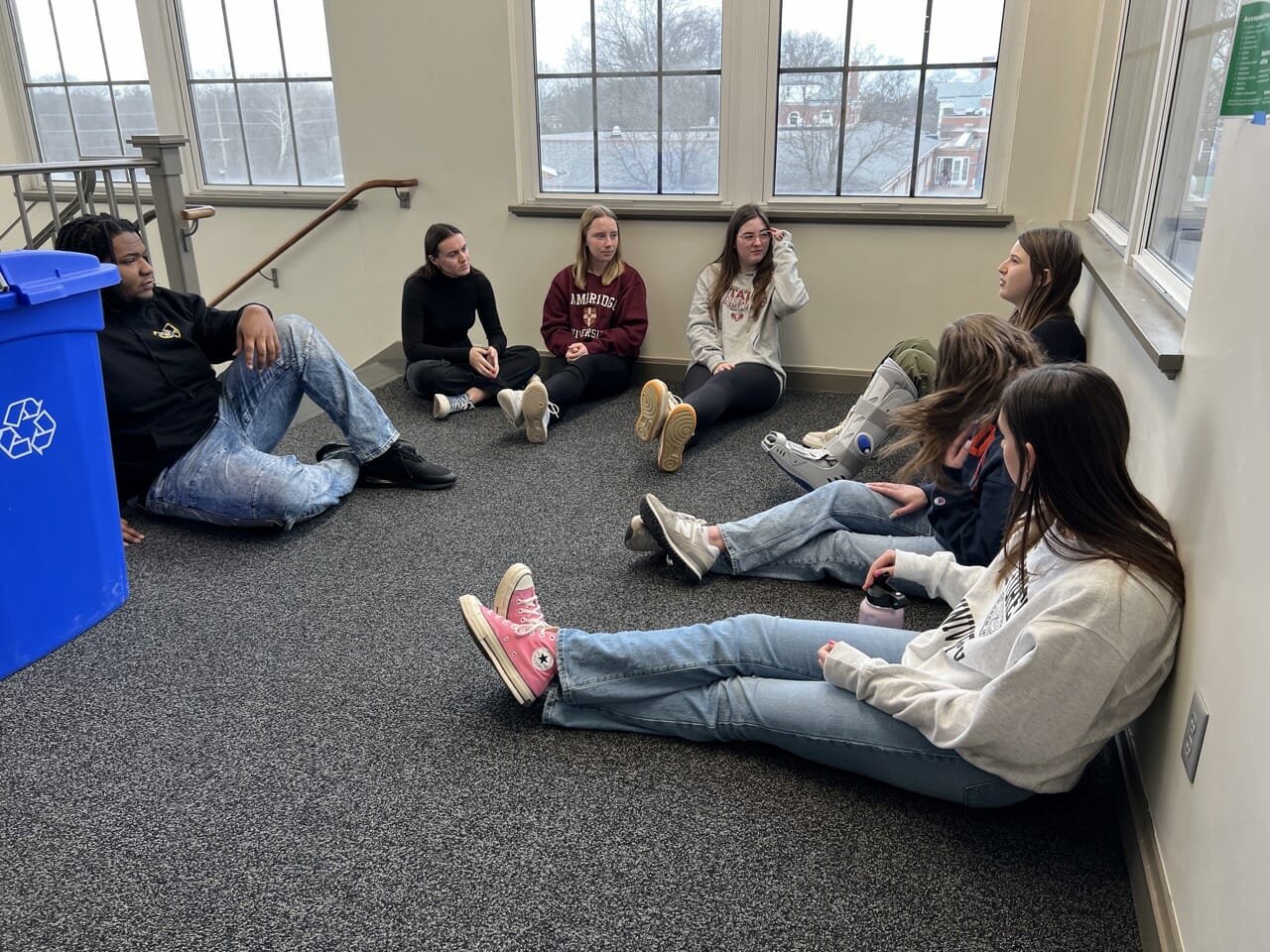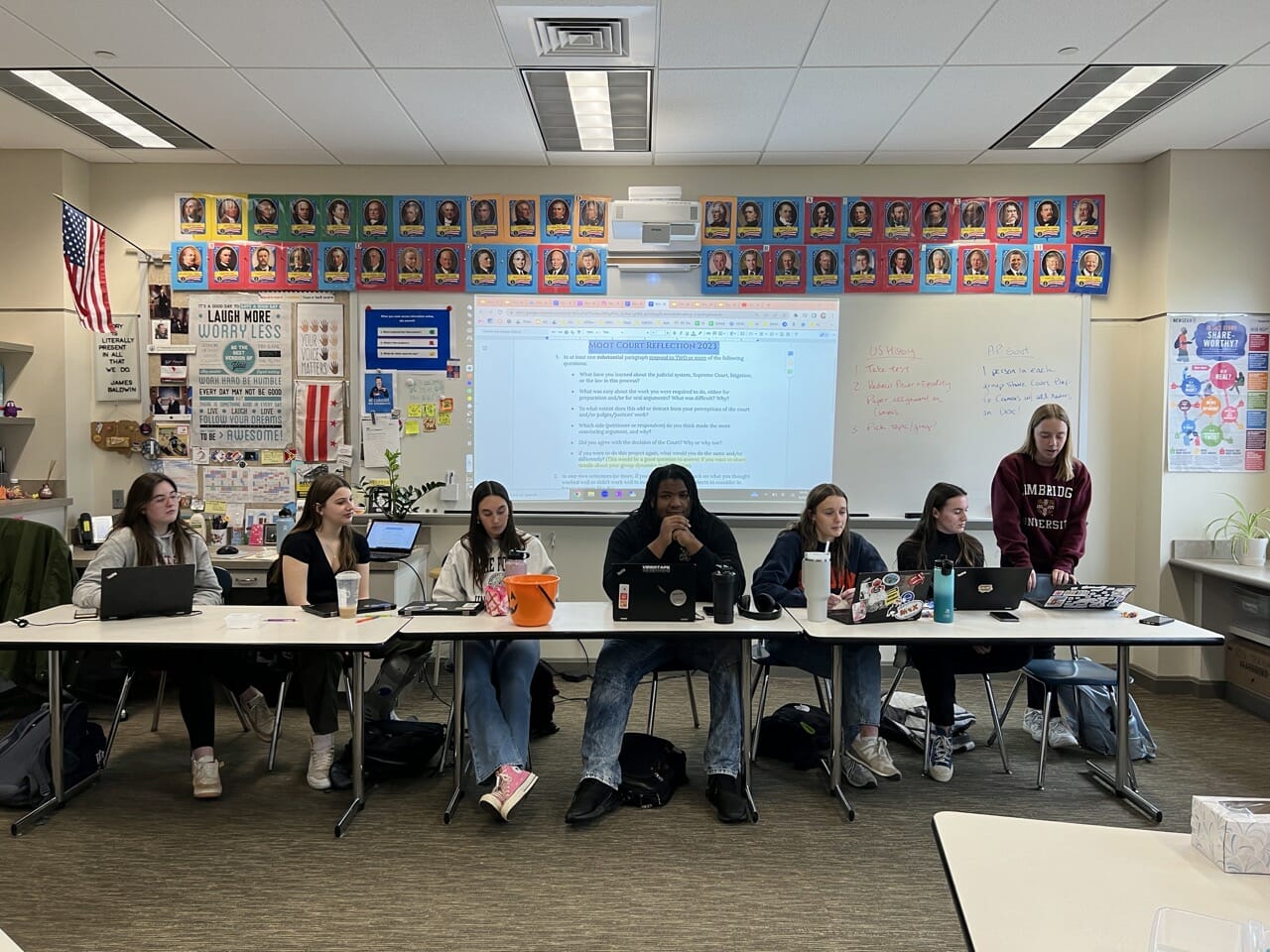Upper School History Teacher Kristin Roberts’ AP American Government class engaged in their own moot court last week in class. Moot court is a co-curricular activity during which participants take part in simulated court or arbitration proceedings, usually involving drafting memorials or memoranda and participating in oral arguments.
As a class, these judicious students chose to argue and decide on the Students for Fair Admissions (SFFA) v. Harvard College affirmative action case that the Supreme Court is reviewing this term. The plaintiffs in this case sued Harvard College over its admissions process, alleging that the process violates Title VI of the Civil Rights Act of 1964 by discriminating against Asian American applicants in favor of white applicants. Harvard admits that it uses race as one of many factors in its admissions process but argues that its process adheres to the requirements for race-based admissions outlined in the Supreme Court’s decision in Grutter v. Bollinger.
The class divided into seven Justices of the Supreme Court and two teams of litigators representing the petitioner (SFFA) and the respondent (Harvard College). Each group conducted their own research into the case, reviewing the lower court decisions, the briefs submitted by both parties, and the amicus curiae briefs in preparation for their arguments and questions during class oral arguments.
« I’m also a part of the Mock Trial club so it was super interesting to get to see the differences between the function and structure of the Supreme Court versus that of the district courts, » said Ashley Benoist ’23.
In class last Wednesday, the students held oral arguments where each side had 15 minutes to present their case to the bench with the Justices asking questions throughout both sides’ arguments. The Justices then met in conference to reach a decision of 5:2 in favor of Students for Fair Admissions, stating in their brief opinion that Harvard College’s race-conscious admissions process did violate Title VI of the Civil Rights Act of 1964.
« The Supreme Court project widened my horizons by allowing me to embrace the concept of storytelling, » said Aanya Tiwari ’23. « As reflected in reality, outcomes often bottle down to the way a story is told; this has poured into Supreme Court proceedings. Hence, I received the opportunity to work with my group and portray our side in an unconventional manner. Given that we represented Harvard College, we enjoyed the challenge of victimizing and sympathizing with the institution, especially as we are students facing decisions from such institutions on a daily basis. In hindsight, it gave us a glimpse of reality by telling us, rising seniors and rising college freshmen, the world is no fair place and survival relies on how we sell our stories in the future. »
« I loved the Moot Court simulation because it was a great way to get an in-depth understanding of the Judicial System and the workings of the Supreme Court, » said Benoist. « I loved that it was interactive and different from the passive activities that are more typical of a history class. »
Everyone in class then reflected on how they now better understand the process of the Supreme Court and the potential impact of their decisions on the nation. Roberts reports, « We are all now anxiously awaiting the real Supreme Court’s decision later this spring! »




